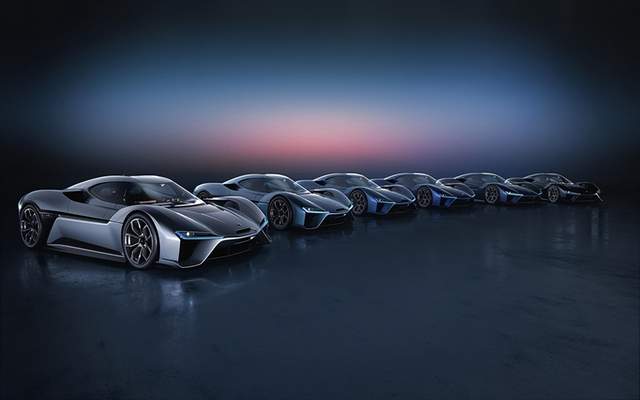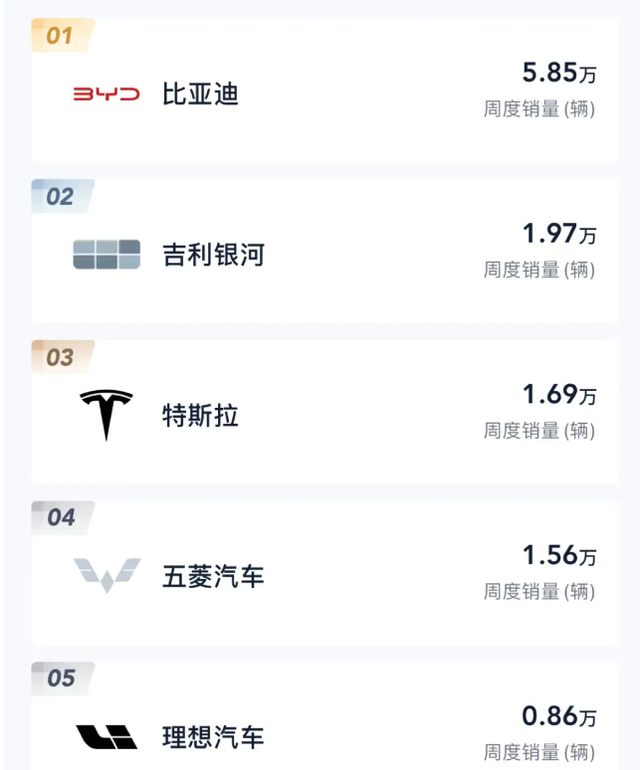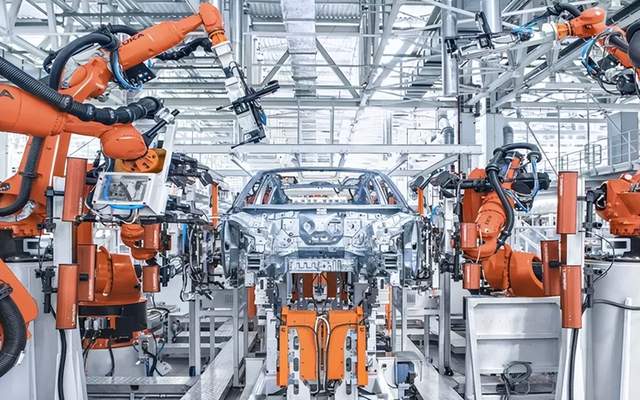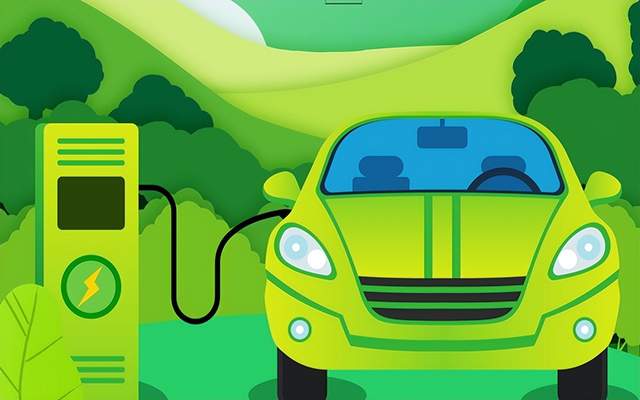Two Traditional Automakers Soar, EV Pioneers Solidify Positions, and New Entrants Face Severe Pressure
![]() 03/30 2025
03/30 2025
![]() 523
523
Media outlets have released sales figures for the 12th week of 2025, revealing a clear hierarchy among the top players. The top four companies hold a significant lead, while the fifth position lags noticeably, indicating that the new energy vehicle (NEV) market is maturing and leaving fewer openings for newcomers.

According to the data, BYD, Geely Yinhe, Tesla, and Wuling Automobile topped the NEV sales chart for the 12th week. BYD leads the pack with sales of 58,500 vehicles, firmly establishing itself at the forefront of the market.
The second to fourth positions all recorded sales exceeding 10,000 vehicles but remained below 20,000. Geely Yinhe sold 19,700 vehicles, followed by Tesla with 16,900 and Wuling Automobile with 15,600. The fifth-placed company sold 8,600 vehicles, highlighting a clear gap between the leading group and the rest.

Among these automakers, Tesla stands out as a direct competitor to new entrants, with a pricing strategy comparable to theirs. Tesla dominates the high-end NEV market, much like Apple in the smartphone industry, focusing on premium offerings.
However, under sales pressure, Tesla plans to introduce a more affordable model, Q, priced around 140,000 yuan. This move signals Tesla's intention to further expand its market reach, potentially shaking up the domestic NEV landscape.
The top three domestic NEV manufacturers have delved into the sub-100,000 yuan segment, with two offering models priced around 70,000 yuan and another even lower at around 30,000 yuan. These affordable prices have endeared them to domestic consumers.
While securing a stronghold in the low-end market, two of these companies are also aggressively targeting the high-end segment. This dual-pronged approach is strategic, as scale is crucial in the automotive industry; without it, survival becomes challenging.

Automobile manufacturing demands substantial capital investment. Unlike the smartphone industry, automakers cannot rely on OEM models; most NEV enterprises operate their own manufacturing facilities.
After-sales service also requires significant funds. Maintaining a robust after-sales network, such as 4S stores, necessitates customized parts, down to the screws. This necessitates 4S stores to purchase special tools from automakers.
Last year, several new entrants struggled, leaving their customers without after-sales support or even spare parts. This underscored the importance of after-sales service and led to severe depreciation of these brands' vehicles, with some reports indicating a 70% to 90% drop in value, prompting consumers to shun small-volume automakers.
Tesla leads the high-end EV market with just two models priced above 200,000 yuan, yet achieving sales of over 16,000 vehicles. Meanwhile, other players are attacking from the low to high end, collectively squeezing new entrants.

In response to the evolving NEV market, new entrants are adapting. Some are transforming, while others are entering the lower-priced market. One newcomer witnessed a sales surge since late last year due to the launch of a model priced just above 100,000 yuan, briefly topping the list of new automakers.
A traditional automaker recently warned that companies without fuel vehicle offerings might struggle due to insufficient scale. This was exemplified by recent news of another new entrant disbanding its R&D team and shutting down its factory.







